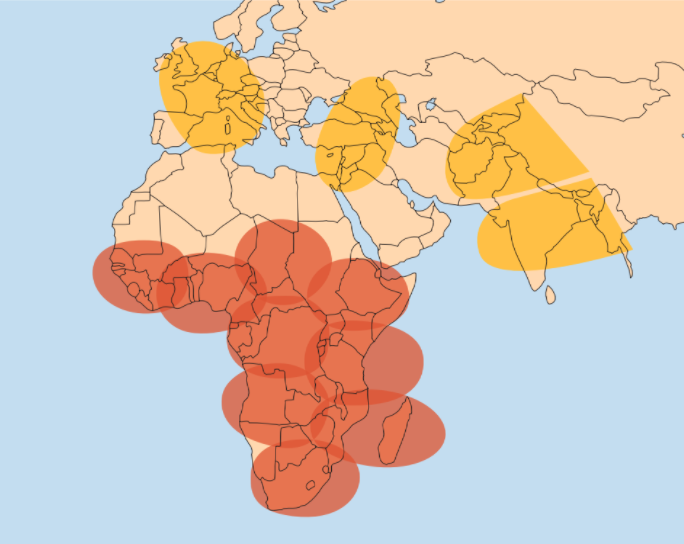Spacecom, an Israeli-based startup, announced Monday the completion of its essential design and review phase for its AMOS-17 communications satellite, which is set to enter its full production stage. The AMOS-17 was specifically designed to cover the African continent, and is tentatively scheduled for a launch at some point in early 2019. The AMOS-17 will operate from 17˚ E, along with expanding and strengthening Spacecom’s coverage throughout Africa, the Middle East, and Europe.
The AMOS-17 will offer thorough Ka-band, Ku-band, and C-band HTS services, while combining broad regional and high throughput beams, maximizing the spectral efficiency. The AMOS-17 will be supplied with the latest generation digital payload, making it what Spacecom describes as the “most advanced” satellite over Africa. With an expected in-orbit life of 19 years, the AMOS-17 will continue delivering Spacecom’s long-term commitment to its African markets, bringing multi-band high-throughput technologies to deliver unique service capabilities that aren’t possible on conventional satellites.

AMOS-17 C-band coverage over the Eastern Hemisphere (Image Credit: Spacecom)
Spacecom also operates three other AMOS satellites (3, 4, and 7), which provide broadcast and communicative services to Europe, the Middle East, and Asia through direct-to-home and broadcast satellite operators, Internet service providers, telecom operators, network integrators, and government agencies. The AMOS-17 was constructed by Boeing in 2016, who aimed to develop an all-digital satellite for meeting the growing needs of its Eastern Hemisphere markets.
The AMOS-17 will be launched into orbit by SpaceX, using a Falcon-9 launch vehicle. Spacecom is taking advantage of credits from fees the company already paid SpaceX, for launching the AMOS-6. SpaceX designated these credits to Spacecom after the AMOS-6 was lost during an unsuccessful launch in September 2016.
While the AMOS-17 will be covered by the loss of its predecessor, Spacecom doesn’t consider this advanced craft a replacement for the AMOS-6. The company intends on filling the void created by the destroyed satellite with the AMOS-8, another satellite Spacecom intends on launching in the latter-half of 2020.
Filed Under: Aerospace + defense




